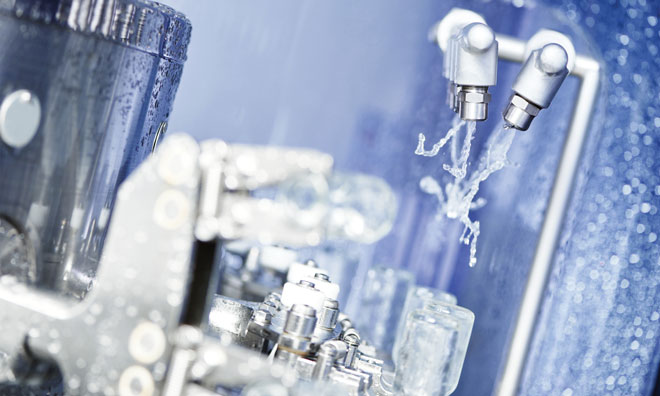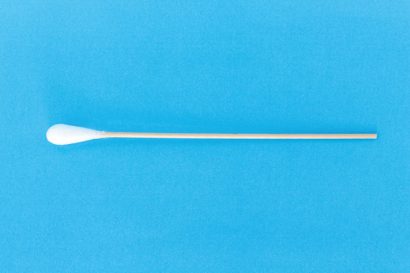At-line swabbing analysis as a process analytical tool
Posted: 20 October 2016 | | No comments yet
Swabbing is a technique commonly used during pharmaceutical cleaning protocols to ensure that the cleaning process meets both safety and regulatory requirements; this allows for the cleaning process to be subsequently verified and validated1-7.


It simply involves ‘wiping’ the surfaces of manufacturing equipment after cleaning following a production campaign using a material made of, for example, polyester, cotton or polyurethane, moulded onto a rigid/semi-rigid handle6 . Residues collected by the ‘swabs’ are then extracted, analysed and quantified in order to ascertain if they meet pre-defined acceptable limits6-7 .
In the pharmaceutical industry cleaning verification is a tremendously scrutinised quality process that ensures product quality/efficacy and prevents cross-contamination during product manufacturing6-8. Cleaning validation, however, is the overall summary of all the processes/techniques involved in sustaining the cleanliness integrity of the pharmaceutical equipment irrespective of its processing antecedents1 .
Most recently, the trend in pharmaceutical manufacturing has been to move towards more frequent lower-volume production, in contrast to larger-volume fewer-production campaigns, thus necessitating the need to clean and changeover manufacturing equipment more regularly9-11. As a consequence, there has been an increase in demand for the resources required to swab equipment surfaces and subsequently analyse the residues collected by the swabs.


Swabbing is a vital process of pharmaceutical cleaning
While reducing the number of swabbing points or swabs taken might not be ideal – especially due to the nature and geometry of some equipment trains – having an automated or semi-automated method of quickly analysing swab extracts at-line or online would go a long way to reducing the overall time (e.g., a 20% reduction in changeover time was seen as reasonable in an ongoing study)10, cost and other resources expended on pharmaceutical cleaning qualification and validation12-15. Therefore, new and more robust cleaning verification/validation approaches are required, not only to meet industrial needs for improved productivity with reduced cost and ecological impact, but also due to more stringent regulatory conditions16-18. In recent years a lot of analytical techniques have been developed for real-time monitoring of pharmaceutical cleaning verification. These include, but are not limited to, the following: mass spectrometry,19,20 ion mobility spectroscopy,21-26 total organic carbon,27,28 gas chromatography29,30 and atomic absorption spectrometry31. However, the most commonly used analytical method for quantifying residual limits during pharmaceutical cleaning is high performance liquid chromatography (HPLC). This is due to its higher levels of selectivity and specificity as compared with other previously mentioned techniques32-39.
However, despite the obvious advantages of HPLC, it also has numerous disadvantages: it is expensive, slow and non-ecological because it involves extensive solvent usage40-42. Attempts have been made to use HPLC in combination with other different techniques in order to further improve its robustness and rapidity, but with little success. Examples include: liquid chromatography-mass spectroscopy43- 44, HPLC-ultra violet (HPLV-UV) spectroscopy45 and ultra-performance liquid chromatography46.
Some pharmaceutical companies spend as much as 50% of their manufacturing year on cleaning and changeover, which has negative implications on plant efficiency and utilisation
However, in 2013, in collaboration with Customs Sensors and Technology, global pharmaceutical giant GlaxoSmithKline published its novel study into the use of a portable light emitting diode (LED) array-based light-induced fluorescence (LIF) sensor, which can be deployed at/in-line (with wireless capability) to rapidly analyse both residue and rinsate extracts during pharmaceutical cleaning7 . It has the dual advantage of being able to actively control both the detection parameters and the LED excitation intensities. This newer approach empowers the sensors to detect lower level concentrations of residual drugs, compared with other traditional LIF sensors. It combines high sensitivity and selectivity with regulatory acceptable residual limits. The system was validated with three manufacturing campaigns (of a final drug containing an API; compound A) and used to quantify residues on both swab and rinsate extracts, which was reported to have taken less than one minute in both cases.
While it does not reduce the number of swabbings needed, the time required to analyse samples is immensely reduced, compared with any previously reported study. As part of our mission here at the Pharmaceutical Manufacturing Technology Centre (PMTC), which is to make Ireland the global hub of pharmaceutical process innovation and advanced manufacturing, we are looking at ways of introducing novel technologies (ATEX rated)47 to either reduce swabbing or make at/in-/online swab analysis quicker, easier and non-intrusive. Preliminary results on pharmaceutical cleaning from an ongoing study carried out by the PMTC and Britest Ltd indicates that some pharmaceutical companies spend as much as 50% of their manufacturing year on cleaning and changeover, which has negative implications on plant efficiency and utilisation, as well as knock-on effects on supply chain management10.
As a result, any new technology/ technologies with a scientific or engineering insight that would help ameliorate issues relating to swabbing or swab verification will go a long way in reducing cost, speeding up the pharmaceutical manufacturing changeover process, and generally improving manufacturing efficiency. Funded by both Enterprise Ireland and IDA Ireland, supplemented with co-funding from industry and other public sources, and working in conjunction with a large percentage of pharmaceutical manufacturing companies based in Ireland, the PMTC aims to develop technologies that add value to its industrial collaborators and provide the competitive edge they need in the global manufacturing sphere.
About the authors












